Trump Pulled His NASA Pick, But Jared Isaacman Would’ve Rebuilt the Moon Program
The fallen NASA administrator nominee was clearly not a fan of the agency's plan to return astronauts to the Moon.

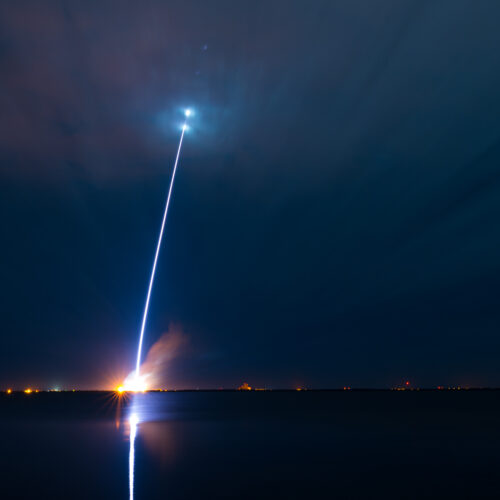
Eighteen months after leaving his job as a vice president at Amazon to take over as Blue Origin's chief executive, Dave Limp has some thoughts on how commercial companies and government agencies like NASA should explore the Solar System together.
Limp had no background in the space industry before taking the helm of Jeff Bezos' space company in December 2023. He started his career as a computer scientist at Apple, took a stint at a venture capital firm, and joined Amazon in 2010, where he managed development of consumer devices like Alexa, Kindle, and the Fire TV.
"I had no thoughts of ever running a space company," Limp said Thursday at a space conference in Washington, DC. "I've done consumer electronics my whole life. Started at Apple and did a bunch of other things, and so when I decided to retire from Amazon, I was looking for something that I could give back a little bit, be a little bit more philanthropic in the sort of second half of my career. I didn't want to stop working, just wanted to do something different. And about that same time, Jeff was looking for a CEO."


© Blue Origin
The White House Office of Management and Budget dropped its "skinny" budget proposal for the federal government earlier this month, and the headline news for the US space program was the cancellation of three major programs: the Space Launch System rocket, Orion spacecraft, and Lunar Gateway.
Opinions across the space community vary widely about the utility of these programs—one friend in the industry predicted a future without them to be so dire that Artemis III would be the last US human spaceflight of our lifetimes. But there can be no question that if such changes are made they would mark the most radical remaking of NASA in two decades.
This report, based on interviews with multiple sources inside and out of the Trump administration, seeks to explain what the White House is trying to do with Moon and Mars exploration, what this means for NASA and US spaceflight, and whether it could succeed.


© NASA

A couple of weeks ago, ground teams at NASA's Kennedy Space Center in Florida removed one of the four main engines from the Space Launch System rocket slated to send four astronauts on a voyage around the Moon next year.
NASA officials ordered the removal of one of the massive rocket's RS-25 main engines after discovering a hydraulic leak on the engine's main oxidizer valve actuator, which controls the flow of super-cold liquid oxygen propellant into the engine's main combustion chamber, an agency spokesperson told Ars.
In its place, technicians installed another RS-25 engine from NASA's inventory to the bottom of the rocket's core stage, which is standing vertical on its mobile launch platform inside the cavernous Vehicle Assembly Building at Kennedy. Teams began integrating the replacement engine with the rocket last Friday and are in the process of firmly securing it in the Engine 4 position on the core stage, the NASA spokesperson said.


© NASA


Late Saturday night, technicians at Kennedy Space Center in Florida moved the core stage for NASA's second Space Launch System rocket into position between the vehicle's two solid-fueled boosters.
Working inside the iconic 52-story-tall Vehicle Assembly Building, ground teams used heavy-duty cranes to first lift the butterscotch orange core stage from its cradle in the VAB's cavernous transfer aisle, the central passageway between the building's four rocket assembly bays. The cranes then rotated the structure vertically, allowing workers to disconnect one of the cranes from the bottom of the rocket.
That left the rocket hanging on a 325-ton overhead crane, which would lift it over the transom into the building's northeast high bay. The Boeing-built core stage weighs about 94 tons (85 metric tons), measures about 212 feet (65 meters) tall, and will contain 730,000 gallons of cryogenic propellant at liftoff. It is the single largest element for NASA's Artemis II mission, which is slated to ferry a crew of astronauts around the far side of the Moon as soon as next year.


© NASA/Frank Michaux
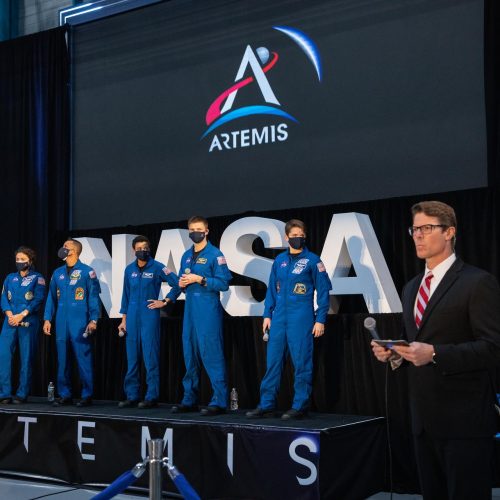
About five years ago, the Trump-appointed administrator of NASA, Jim Bridenstine, revealed the name of the program that would return humans to the Moon. It was to be Artemis, from a Greek goddess who was the twin sister of Apollo.
The symbolism was clear. NASA’s second human program to the Moon would be different: We were going to stay this time, there would be more international partnership, and instead of being all-male, the crews would include women. Shortly thereafter, NASA began to refer to Artemis as a program that would land the "first woman" on the Moon. Soon, an additional bit of diversity was added: “and the first person of color.”
One of the very last acts of the first Trump administration in regard to space was to name a cadre of astronauts that would fly as part of the Artemis Program. This subset of 18 people within NASA’s corps of four dozen active astronauts skewed significantly more female and minority than the general corps.


© NASA
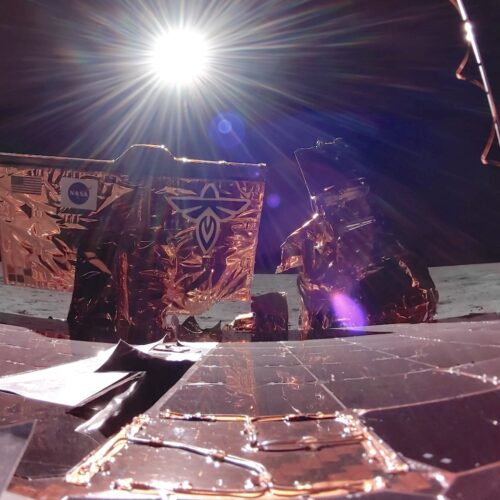
Firefly Aerospace's Blue Ghost science station accomplished a lot on the Moon in the last two weeks. Among other things, its instruments drilled into the Moon's surface, tested an extraterrestrial vacuum cleaner, and showed that future missions could use GPS navigation signals to navigate on the lunar surface.
These are all important achievements, gathering data that could shed light on the Moon's formation and evolution, demonstrating new ways of collecting samples on other planets, and revealing the remarkable reach of the US military's GPS satellite network.
But the pièce de résistance for Firefly's first Moon mission might be the daily dose of imagery that streamed down from the Blue Ghost spacecraft. A suite of cameras recorded the cloud of dust created as the lander's engine plume blew away the uppermost layer of lunar soil as it touched down March 2 in Mare Crisium, or the Sea of Crises. This location is in a flat basin situated on the upper right quadrant of the side of the Moon always facing the Earth.


© Firefly Aerospace

Firefly Aerospace became the first commercial company to make a picture-perfect landing on the Moon early Sunday, touching down on an ancient basaltic plain, named Mare Crisium, to fulfill a $101 million contract with NASA.
The lunar lander, called Blue Ghost, settled onto the Moon's surface at 2:34 am CST (3:34 am EST; 08:34 UTC). A few dozen engineers in Firefly's mission control room monitored real-time data streaming down from a quarter-million miles away.
"Y’all stuck the landing, we’re on the Moon!" announced Will Coogan, the lander's chief engineer, to the Firefly team gathered in Leander, Texas, a suburb north of Austin. Down the street, at a middle-of-the-night event for Firefly employees, their families, and VIPs, the crowd erupted in applause and toasted champagne.


© Firefly Aerospace
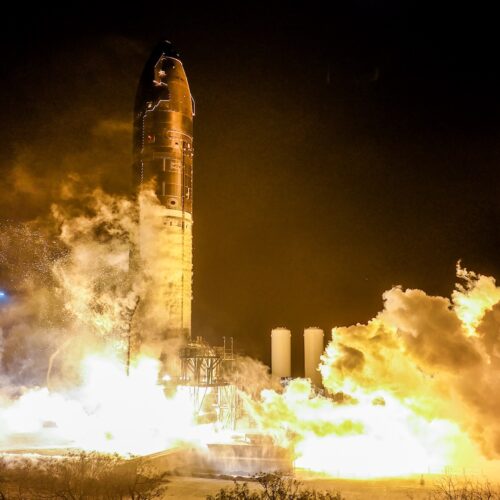
SpaceX plans to launch the eighth full-scale test flight of its enormous Starship rocket as soon as Monday after receiving regulatory approval from the Federal Aviation Administration.
The test flight will be a repeat of what SpaceX hoped to achieve on the previous Starship launch in January, when the rocket broke apart and showered debris over the Atlantic Ocean and Turks and Caicos Islands. The accident prevented SpaceX from completing many of the flight's goals, such as testing Starship's satellite deployment mechanism and new types of heat shield material.
Those things are high on the to-do list for Flight 8, set to lift off at 5:30 pm CST (6:30 pm EST; 23:30 UTC) Monday from SpaceX's Starbase launch facility on the Texas Gulf Coast. Over the weekend, SpaceX plans to mount the rocket's Starship upper stage atop the Super Heavy booster already in position on the launch pad.


© SpaceX

SpaceX plans to launch the seventh full-scale test flight of its massive Super Heavy booster and Starship rocket Thursday afternoon. It's the first of what might be a dozen or more demonstration flights this year as SpaceX tries new things with the most powerful rocket ever built.
There are many things on SpaceX's Starship to-do list in 2025. They include debuting an upgraded, larger Starship, known as Version 2 or Block 2, on the test flight preparing to launch Thursday. The one-hour launch window opens at 5 pm EST (4 pm CST; 22:00 UTC) at SpaceX's launch base in South Texas. You can watch SpaceX's live webcast of the flight here.
SpaceX will again attempt to catch the rocket's Super Heavy booster—more than 20 stories tall and wider than a jumbo jet—back at the launch pad using mechanical arms, or "chopsticks," mounted to the launch tower. Read more about the Starship Block 2 upgrades in our story from last week.


© SpaceX
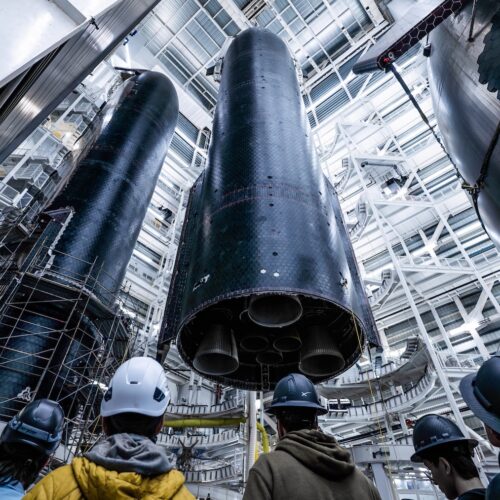
An upsized version of SpaceX's Starship mega-rocket rolled to the launch pad early Thursday in preparation for liftoff on a test flight next week.
The two-mile transfer moved the bullet-shaped spaceship one step closer to launch Monday from SpaceX's Starbase test site in South Texas. The launch window opens at 5 pm EST (4 pm CST; 2200 UTC). This will be the seventh full-scale test flight of SpaceX's Super Heavy booster and Starship spacecraft and the first of 2025.
In the coming days, SpaceX technicians will lift the ship on top of the Super Heavy booster already emplaced on the launch mount. Teams will then complete the final tests and preparations for the countdown on Monday.


© SpaceX

ORLANDO, Florida—On Wednesday, Jared Isaacman made his first public appearance since his nomination earlier this month to become NASA's next administrator. Although his remarks were short on specifics, Isaacman endorsed a vision that would signal radical departures from the way NASA does business.
He talked of commercial investment, a thriving space economy, and going fast and taking risks. These talking points are familiar to anyone who has listened to NASA's leadership in recent years, and there has been tangible progress in the agency's partnerships with commercial companies. However, NASA is leaving some commercial expertise on the field, or in this case, on the ground.
"I love all about the commercial space industry right now," Isaacman said in a discussion at the Space Force Association's Spacepower Conference in Orlando, Florida. "They’re all generally doing the same thing, which is putting a lot of their own dollars on the line because they believe in the future that it holds."


© John Kraus
Hello, and welcome back to TechCrunch Space! To the shock of no one, ever, NASA announced that the next Artemis mission is delayed to no earlier than April 2026, and the subsequent Artemis III mission is delayed to mid-2027. It will be interesting to see how Artemis changes under Jared Isaacman’s leadership — more on […]
© 2024 TechCrunch. All rights reserved. For personal use only.
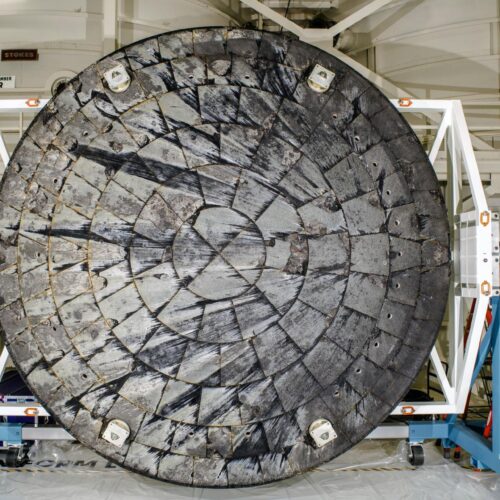
Two years ago next week, NASA's Orion spacecraft splashed down in the Pacific Ocean to wrap up what, at first glance, seemed to be a highly successful unpiloted test flight that made a return to the Moon feel within reach.
The Orion capsule descended under parachutes, right on target near a US Navy recovery ship on December 11, 2022. In 25-and-a-half days, the Orion spacecraft entered the Moon's sphere of influence, flew within about 60 miles (100 kilometers) of the lunar surface, and, for the most part, worked as designed in deep space. On top of that, the rocket's launch vehicle, NASA's heavy-lift Space Launch System, also performed near-flawlessly on its first flight, known as Artemis I.
However, once NASA engineers got a closer look at the Orion spacecraft, their optimism faded. They saw cracks in the craft's heat shield and divots in the ablative thermal protection layer resembling potholes on a neglected street. This isn't what engineers expected, and they spent the next two years investigating the cause of the problem and determining whether it posed a safety risk for NASA's next Artemis mission, Artemis II. If the results weren't favorable, NASA might have to disassemble the Orion spacecraft, pushing back the flight a year or more beyond the Artemis II mission's already-delayed launch date.


© NASA